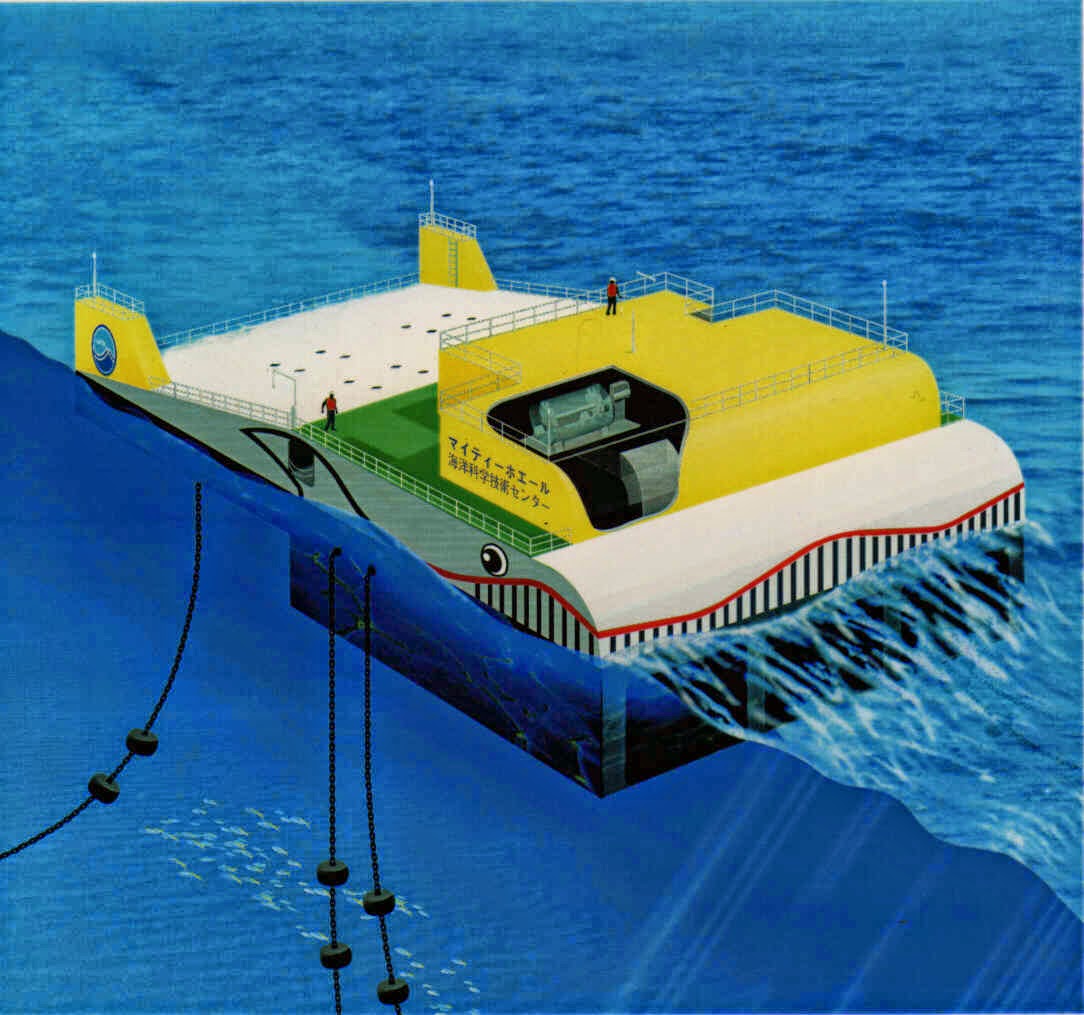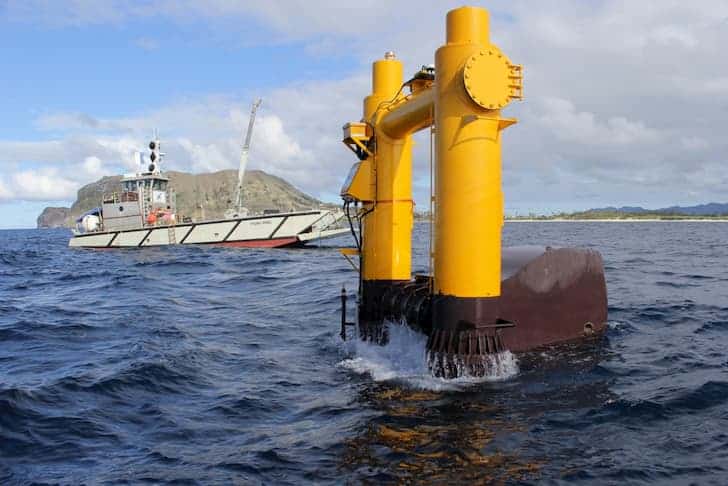Wave energy is a renewable source of energy that can be harnessed from the ocean. The main advantage of wave energy is that it is a clean and renewable source of power that does not produce greenhouse gases or other pollutants. Wave energy is also a very predictable source of power, as the tides are caused by the regular movements of the moon and sun.
Another advantage of wave energy is that it can be used to generate electricity, which can then be used to power homes and businesses. The main disadvantage of wave energy is that it is not currently very efficient, and only a small amount of electricity can be generated from each wave. Wave energy is also intermittent, meaning that it only produces electricity when there are waves present, which may not always coincide with when electricity is needed.
Table of Contents
What are the advantages and disadvantages of wave energy
Wave energy is a form of renewable energy that can be harnessed from the power of waves. Wave energy has many potential advantages, including its renewability and its ability to generate electricity without emitting greenhouse gases. However, wave energy also has some disadvantages, including its high initial investment cost and its challenges in being able to store the energy it generates.
What are the Advantages of Wave Energy
Wave energy is one of the most promising renewable energy sources. It is a clean, emissions-free source of electricity that can be harnessed from water waves. Wave energy has the potential to provide a significant portion of the world’s electricity needs.
There are several advantages of wave energy:
1. Wave energy is a renewable resource. Unlike fossil fuels, which are finite and will eventually run out, wave energy will never run out as long as there is water on earth.
2. Wave energy is environmentally friendly. It does not produce any greenhouse gases or other pollutants that can harm the environment. Wave energy is less disruptive to the environment than other forms of power generation, such as fossil fuels.
3. Wave energy is efficient and reliable. Wave power is also relatively predictable and consistent, which makes it a reliable source of renewable energy.
Once a wave power plant is built, it can generate electricity 24 hours a day, 7 days a week with little maintenance required.
4. Wave energy is cost-effective.
5. The biggest advantage of wave energy is its scalability. Wave power plants can be built to any size, making it possible to generate large amounts of electricity from this source.
6. Wave power can be generated 24 hours a day, 7 days a week
How Does Wave Energy Work
Wave energy is a renewable energy source that can be harnessed to generate electricity. Wave energy works by capturing the kinetic energy of waves and converting it into electrical energy. There are two main types of wave energy devices: offshore and onshore.
Offshore wave energy devices are typically more expensive to develop and operate than onshore wave energy devices, but they have the potential to generate more electricity because of the higher wave speeds offshore. Onshore wave energy devices are less expensive to develop and operate, but they have the potential to generate less electricity because of the lower wave speeds onshore. How does wave energy work?
Wave energy works by capturing the kinetic energy of waves and converting it into electricalenergy. There are two main types of wave Energy converters (WECs): point absorber WECs and attenuator WECs. Point absorber WECs capture the kineticenergy of waves as they hit a floating device in the water.
The device then converts this kineticenergy into electricalenergy which can be used to power homes or businesses connected to an electrical grid. Attenuator WECs are long floating structures that move withthe waves, generating electricity as they do so.
Is Wave Energy Reliable?
Wave energy is a type of renewable energy that can be harvested from the ocean. Unlike other forms of renewable energy, wave energy is constant and predictable, making it a reliable source of power. Wave energy can be used to generate electricity or to pump water, making it a versatile form of renewable energy.
Wave energy is generated by the movement of waves in the ocean. The kinetic energy of the waves can be harnessed using devices called wave Energy Converters (WECs). There are two main types of WECs: point absorption and offshore buoy farms.
Point absorption WECs are anchored to the seafloor and use the up-and-down motion of waves to drive a piston, which generates electricity. Offshore buoy farms are arrays of buoys that are tethered to the seafloor and move with the waves. The buoys are connected to generators onshore via underwater cables, and the generators convert the kinetic energy of the waves into electricity.
Wave energy has several advantages over other forms of renewable energy. First, wave energy is more constant and predictable than solar or wind power, which makes it a more reliable source of power. Second, waveenergy can be used to generate both electricity and desalinated water, making it a versatile form of renewableenergy.
Finally, waveenergy is environmentally friendly and does not produce greenhouse gases or other pollutants.
Despite these advantages, there are some challenges associated withwaveenergy development. One challenge is thatwaveenergysites are often located in remote coastal areas, which can make construction and maintenance difficultand expensive.
Another challenge is that WECs must be designed to withstandthe harsh conditionsof saltwaterand storms at sea.
Is Wave Energy Renewable?
Yes, wave energy is a form of renewable energy. Wave energy is created by the motion of waves in the ocean. This motion creates kinetic energy, which can then be converted into electricity.
There are a few different ways to capture wave energy, but the most common method is to use buoys. Buoys float on the surface of the water and as waves pass by, they bob up and down. This up-and-down motion is used to spin a turbine, which generates electricity.
Wave energy is considered to be a very reliable form of renewable energy because waves are generated by the wind, which is a constant source of power. Additionally, wave power can be captured in shallow waters nearshore, making it easier and less expensive to build wave energy plants than other types of renewable energy plants (such as offshore wind farms).
How Efficient is Wave Energy?
Wave energy is a clean and renewable source of energy that has the potential to provide a significant amount of power to our homes and businesses. Wave energy technology is still in its early stages, but it has already shown great promise as an efficient and environmentally friendly source of energy.
How does wave energy work?
Wave energy devices, also called wave energy converters (WECs), capture the kinetic energy of waves and convert it into electricity. There are many different types of WECs, but they all work by using the up-and-down motion of waves to move a piston or rotor inside a chamber. This motion drives a generator to produce electricity.
Why is wave energy efficient?
One major advantage of wave energy is that it is very predictable and consistent. Unlike other renewable sources such as solar and wind, which can be intermittent due to changes in weather conditions, waves are generated by the tides, which are themselves driven by the gravitational pull of the moon.
This means that we can predict with a high degree of accuracy when waves will occur, making it possible to generate electricity on a regular basis.
Another advantage of wave energy is that it has a very high power density. This means that a relatively small amount of land is required to generate large amounts of electricity – something that is not possible with other renewable sources such as solar and wind.
What are the challenges facing wave energy?
Wave energy technology is still in its infancy, which means there are some technical challenges that need to be overcome before it can become widely adopted. One challenge is developing reliable and cost-effective WECs.
Biomass Energy Advantages And Disadvantages
As the world looks for ways to become more energy efficient and less reliant on fossil fuels, biomass energy is gaining popularity. Biomass is organic material that can be used to generate electricity, heat, or other forms of power. It’s a renewable resource that can come from a variety of sources, including wood pellets, agricultural waste, and even landfill gas.
While biomass energy has many potential advantages, there are also some significant disadvantages to consider. Let’s take a closer look at both sides of the issue:
Advantages of Biomass Energy
1. It’s Renewable – One of the biggest advantages of biomass energy is that it’s a renewable resource. Unlike fossil fuels which are finite and will eventually run out, biomass can be replenished relatively quickly. This makes it a sustainable option for long-term energy production.
2. It Reduces Greenhouse Gases – Another big advantage of using biomass energy is that it can help reduce greenhouse gas emissions. When burned, biomass releases carbon dioxide into the atmosphere just like any other fuel source. However, since it comes from recently living plants or animals, the amount of carbon dioxide released is equal to the amount that was absorbed while the plant or animal was alive.

Credit: mechanicalinventions.blogspot.com
What are Disadvantages of Wave Energy?
Wave energy is a renewable energy source that has the potential to help contribute to a cleaner environment and reduce our reliance on fossil fuels. However, as with any new technology, there are also some potential disadvantages of wave energy that should be considered. One of the main disadvantages of wave energy is the cost.
Wave energy is still in the early stages of development and thus costs can be high. In addition, maintenance costs can also be higher than for other forms of renewable energy such as wind or solar power. Another disadvantage of wave energy is that it is not always consistent.
The waves need to be of a certain size and strength in order for the devices to generate electricity and this can vary depending on the location and time of year. This means that wave farms need to have backup power sources in case there are periods when the waves are not strong enough to generate power.
Wave energy can also have an impact on marine life. The devices used to generate electricity from waves can create noise underwater which can disturb or even harm marine creatures. There is also a risk that fish or other animals could become entangled in the device’s moving parts.
Another disadvantage of wave energy is their environmental impact. While these technologies do not produce emissions themselves, they can cause environmental damage when they are built and operated. For example, constructing wave and tidal farms can damage coastal habitats, while the operation of these farms can create noise pollution that affects marine life.
Additionally,wave power plants can only be built in locations with strong ocean waves, limiting their potential locations around the world.
Conclusion
Wave energy is a type of renewable energy that can be harnessed from the ocean. The main advantages of wave energy are that it is a renewable resource, it is relatively constant, and it has low environmental impacts. The main disadvantages of wave energy are its high initial costs, its limited geographical availability, and its potential impacts on marine life.
